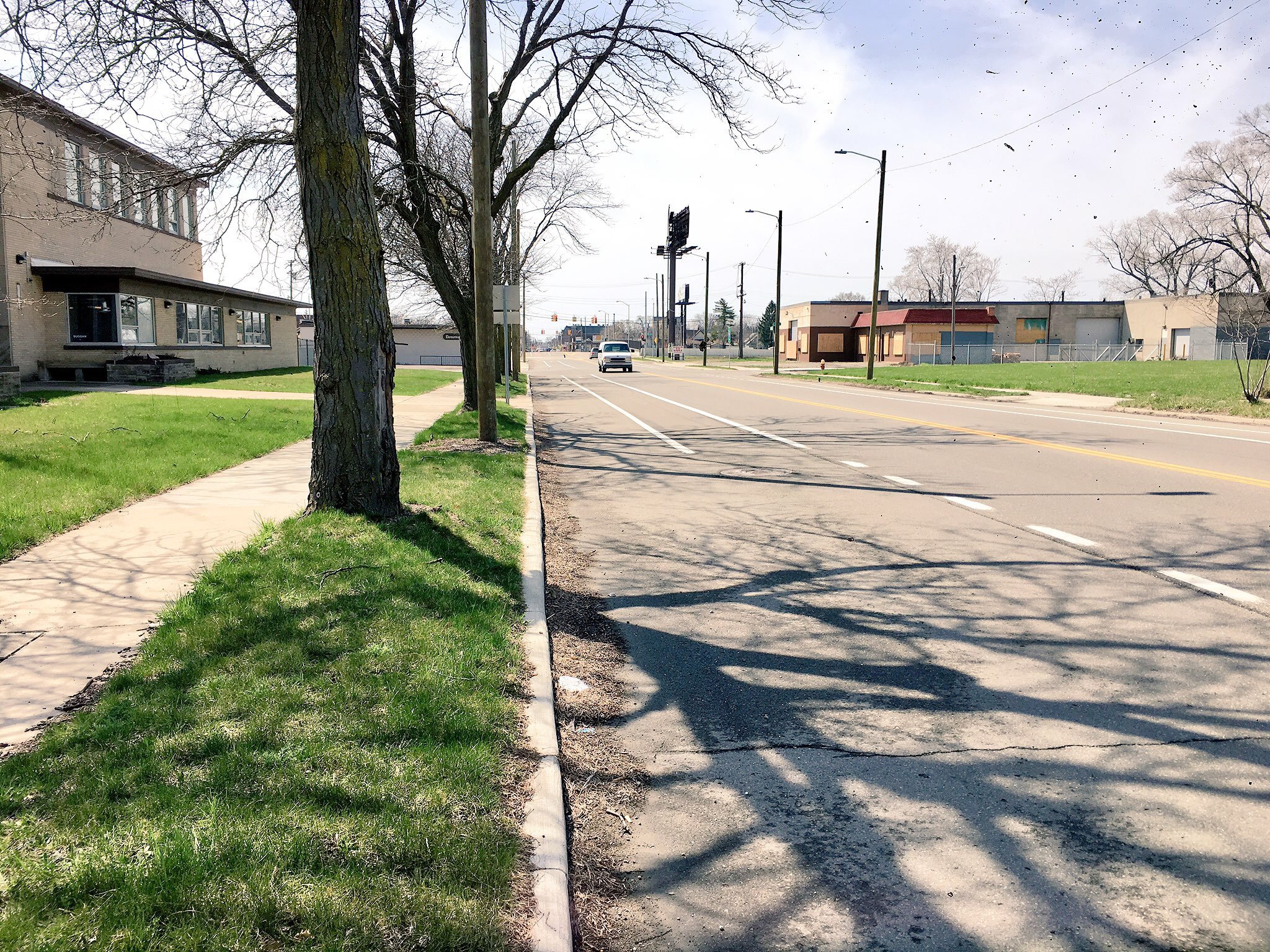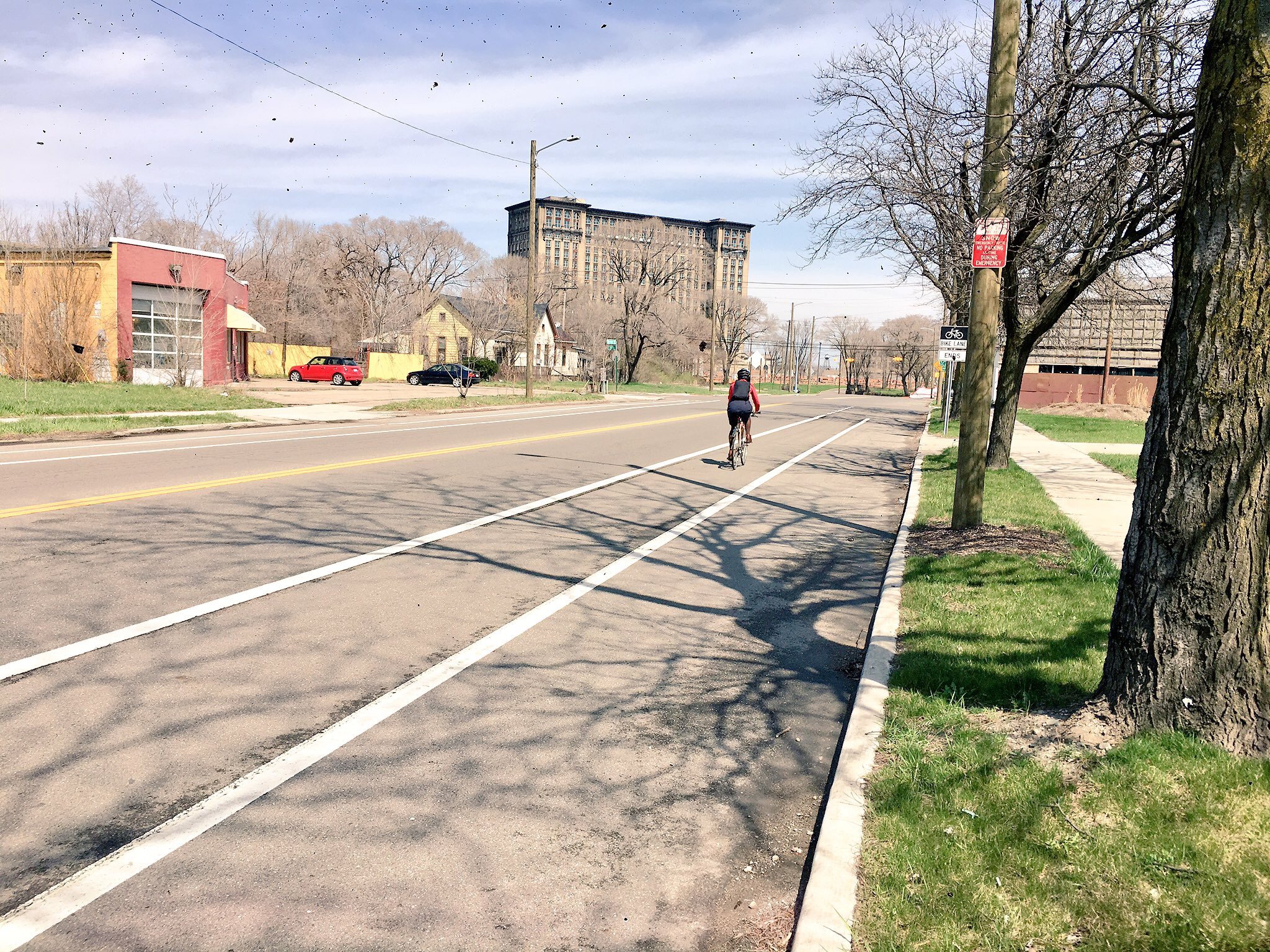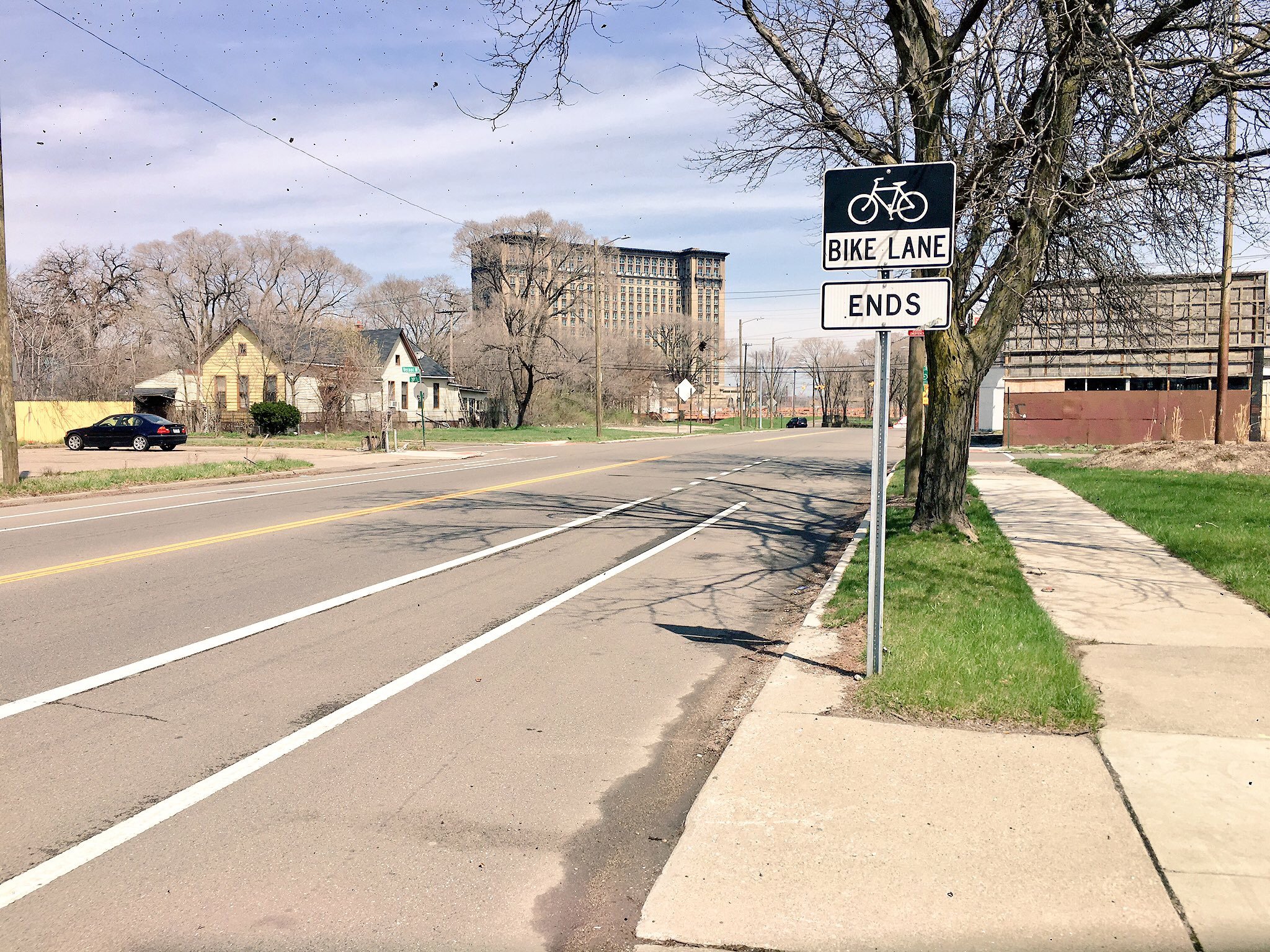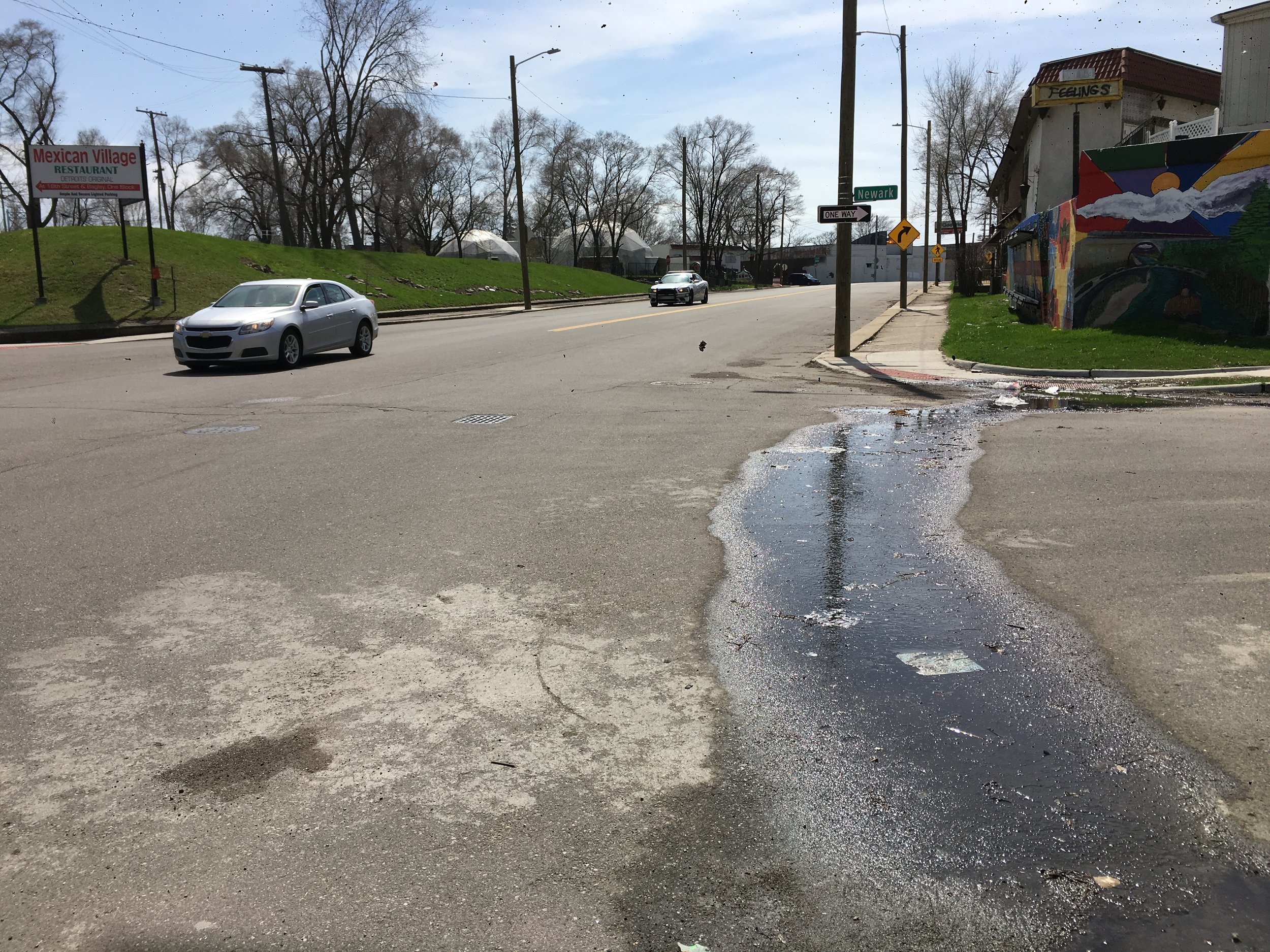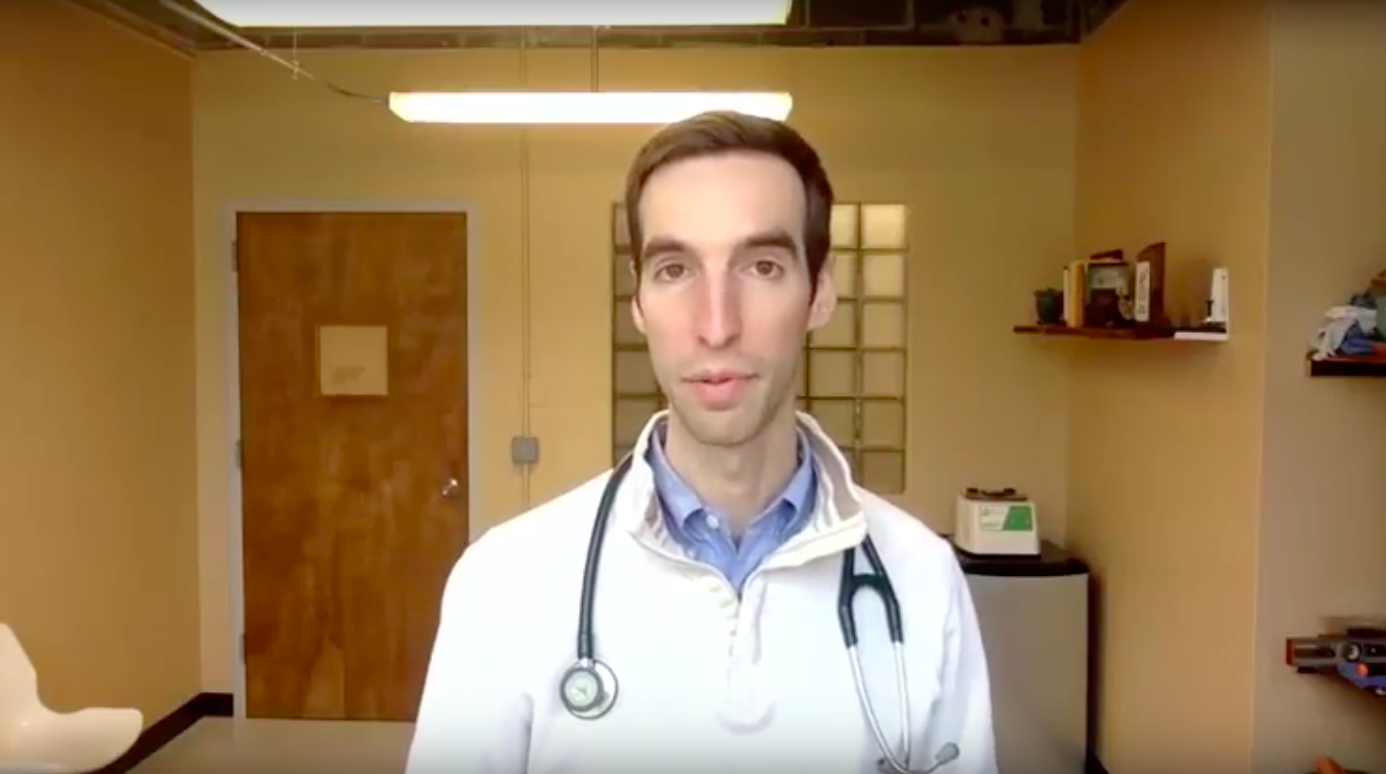Plum Health Blog
Where the Bike Lane Ends
When I think about creating an affordable, accessible healthcare service in Detroit, there are many factors that I consider. One of them is physical accessibility by foot, by bike and by car. How can I help to ensure that all patients and community members have access to the resources that I provide in my Family Medicine practice? Am I able to serve the spectrum of people with varying incomes and abilities in my office? What barriers do people face when trying to get to my clinic?
Our Plum Health office is situated about 1 block from I-96/I-75 near the Vernor Highway exit. That's right, my office sits at the intersection of 2 "highways". Vernor Highway is not much more than one lane of each traffic in each direction, but the sentiment remains. We have a parking lot, there is sidewalk leading to our entrance, we are on a bus line, and we have parking spaces for persons with disabilities.
However, there is one area where we can improve! There is a Bike Lane on Vernor Highway in both directions that extends from SW Detroit and ends in front of my office in between 20th and 21st Streets. This is unfortunate, because there are Bike Lanes going in both directions on Michigan Avenue, less than 0.5 miles away.
All I'm saying is that there's a real opportunity here to connect SW Detroit, Mexicantown and the historic West Vernor Business District with Michigan Avenue, Corktown, and the Corktown Business District.
So for anyone in the City of Detroit, if you're reading/watching/listening, here's my prescription for a healthier road, healthier neighborhood, and healthier community:
- Clean up the garbage that has accumulated underneath the Michigan Central Station Rail Lines and along West Vernor highway. I'd be happy to help with this myself or by organizing a group of people in the community to assist or get this done. However, we would likely need support with some bulk collection if we went this route!
- Extend the Bike Lane on Vernor Highway between SW Detroit at 20th Street and Michigan Avenue. This would be relatively easy and would make for a safer crossing in the greater Roosevelt Park area.
- Cross walk markings in the Roosevelt Park area. There are several intersections in the Roosevelt Park area that are not demarcated by cross walks. This makes for dangerous crossings for pedestrians and bicyclists and ultimately less connected neighborhoods.
- Install lighting underneath the Michigan Central Station's viaduct.
Ultimately, citizens in Detroit face challenges with regular activity, obesity, and access to healthy food and parks. Creating an inviting environment for healthy activities by investing in Complete Streets at key intersections will be beneficial and will make an impact on the lives of residents in Detroit.
Sincerely,
- Dr. Paul with Plum Health DPC
Direct Primary Care versus Concierge Medicine
The phrases Direct Primary Care and Concierge Medicine are sometimes used interchangeably, but they are distinct entities.
The Concierge Medicine movement began around the year 2000 with doctors charging an access fee for their services while still billing insurance companies. The average membership cost for Concierge Medicine is roughly $2,000/year and up to $15,000/year.
Contrast that with Direct Primary Care or DPC. The DPC movement began around 2010 with doctors like Garrison Bliss in Seattle and Josh Umbehr in Wichita among others. Memberships cost roughly $10 - $100/month. There is an emphasis in DPC on a monthly membership structure - members are not locked in for a 1 year commitment.
In Concierge Medicine, the membership costs allows for access. Because the membership cost is relatively high, these types of practices attract the top 1% - 5% income earners. These high income earners are relatively price insensitive, so they are not as concerned about saving money on medications, labs or imaging. These patients are willing to pay for these ancillary services via their insurance even though the price may be inflated.
In Direct Primary Care, the membership includes more services. DPC doctors typically don't charge per visit fees and they try to move away from fee-for-service type transactions. Many ancillary services are included in DPC memberships, like EKGs, Spirometry, Wart Removal, etc... In addition, DPC docs get their patients wholesale medications, at-cost labs, and at-cost imaging services.
Concierge Medicine clinics attract members via programs like "Executive Physicals" or "Executive Health". These are tailored to high-income earners like people in the "C-Suite", aka CEOs, COOs, an CFOs.
Direct Primary Care doctors focus on health maintenance, wellness, and the bread and butter primary care services like preventive health, screening tests, chronic disease management, and acute care needs.
Concierge Medicine practices often mandate that you carry a high-end insurance policy - these practices often bill their patients' insurance companies for routine visits or services.
Direct Primary Care doctors do not bill insurance companies for the services they provide. That means that DPC doctors can take care of patients across a wide spectrum of coverage. For example, if you are uninsured, underinsured, or fully insured, you can be seen at Plum Health DPC. This is true for most DPC clinics.
I put together a short video to emphasize some of these differences. The audio got a little out of sync near the end, so I'm sorry about that! I'll try to re-shoot it later this week!
- Dr. Paul with Plum Health
One last thing, if you’re a Primary Care Doctor or Allied Health Professional that is looking to Start and Grow a Direct Primary Care practice, check out our sister site www.StartUpDPC.com. You’ll find more information and in-depth courses on building the Direct Primary Care practice of your dreams.
How to Start A Direct Primary Care Clinic Right Out of Residency
This week, I received a question from one of my followers on YouTube! Big shout out to everyone who follows/watches - I appreciate you!
Anyways, the question is this: do you recommend starting a Direct Primary Care practice right out of Residency Training? And yes, I do! There are several ways to go about this, but it is better to start right out of residency than to wait until you have established fee-for-service patients or established insurance-based contracts.
Probably the best way to do this is to work for the first 6 months out of residence in an infusion center, urgent care, or hospital setting. Take one of these "moonlighting" jobs, work 40 - 60 hours a week, and spend the remaining 20 hours in your work week setting up your Direct Primary Care practice.
So, how do you set up a Direct primary care practice?
First, start with why. For more on this, read Simon Sinek's book of the same name. In short, you want to create a business that reflects your "why", or why are you doing this? For me, I wanted to create a healthy resource for the community that was affordable and accessible for all people. The name "Plum Health" reflects that mission. Plums are affordable and available to the community. You can buy them at nearby Eastern Market or from your local grocery store. They are also purple, representing inclusion, and health giving.
Then, develop a brand and a website. You want to create a sleek, modern website with an easy-to-pronounce name. "Plum Health DPC" works for me for the following reasons: Plums are healthy, kind of like "an apple a day keeps the doctor away". Plums can be drawn by making two overlapping circles, for me symbolic of the doctor-patient relationship, which has greater overlap in my practice. Also, Plum Health DPC indicates that we're a Direct Primary Care practice - it says so in our name! Finally, the domain "PlumHealthDPC.com" was available, which is a must!
Try to avoid stuff like "Salubrious Health" or some similar SAT vocabulary word. Also avoid overly long names. Keep it simple! Other alternatives that would have worked well for me would have been "Plum Primary Care" or "Plum Family Medicine". If you live in a small town or are in a distinct neighborhood, you can highlight that neighborhood or town in your name. I am in the Corktown/Southwest Detroit neighborhood currently, so something like "Corktown Primary Care" or "Corktown Family Medicine" would have been reasonable, with a domain name like "CorktownPC.com", "CorktownFM.com" or "CorktownMD.com". But, choosing the name is contingent on the availability of the domain.
The only downfall to naming your brand after a specific location is that if you decide to expand and open a second location, your brand will be incongruous with that second location. For me, I know that I wanted to be in Detroit to start and the goal is to expand regionally, so choosing a name that was not location-specific was important to me.
Your website is super important because it becomes a beta test for your market. If you are getting good traffic, engagement and responses from the community, these are positive signs. If not, it's not the end of the world, you may just have to be more proactive with your marketing efforts.
Beyond Naming, branding, and websites
Beyond naming and branding, form an LLC, PLLC, or S-Corp. Consult with a lawyer on which is best for you. Perhaps hire that lawyer or set up a retainer agreement so that you can consult that lawyer as your business grows. Then, set up a business bank account. Link that business bank account to software like QuickBooks so that your expenses are tracked.
Everything that you spend on the practice stays within the practice, meaning that you should treat your business as a separate entity from your personal finances. You may infuse your business with your own capital and that's why working 40 - 60 hours/week makes sense for 6 months. This way you can make enough money to fund your DPC start-up.
Alternatively, you can get a business or medical practice loan from a bank like Wells Fargo or Bank of America. Next, you need to have someone review your expenditures, so hiring an accountant or having a retainer agreement with an accountant is a must.
Choosing an Electronic medical record
Then, you should choose an Electronic Medical Record (EMR). Personally, I use ATLAS MD EMR because the platform is made by DPC doctors for DPC doctors. Also, ATLAS has a billing platform integrated into the EMR, which makes your life and your practice easier to manage. You can link your ATLAS MD account to your website and have people sign up directly on your site - these are called pre-enrollments. You can do this on a trial basis with ATLAS, and once you hit your start date, all those "pre-enrollments" will become paying customers when you hit "start" on the EMR side. At that point, your customers will start paying you for services and you will start paying ATLAS for the platform.
Other contracts
During this time, you should also be setting up contracts with your service providers. Internet, copy/fax machine, lab services, medication wholesaler, medical supplier, medical waste, shredding, general waste, etc... You should also be looking around for real estate options. A good way to test your model is to sublease from an existing doctor's office. Maybe you can find a general surgeon and you could sublease a few unused exam rooms - one to see patients and one to store meds, supplies, etc... If you are successful in that sublease location, you can look at expanding your business and setting up your own lease.
Benefits to subleasing are numerous. You won't have to set up your own internet provider, copy machine, medical waste, shredding, and general waste contracts - they will likely be included in your lease agreement depending on what you negotiate for.
Final thoughts
Setting up a Direct Primary Care practice is not easy, but it can be done successfully if you take measured risks as you grow. The website is your first test. For me, I started making house calls as a second test. As a third test, I subleased a one-room office from a local school. The next test for me will be to lease out my own office/building, and I'm just about at that point!
Also in this vlog, I touch on Public Service Loan Forgiveness programs and the effect it may have on primary care doctors choosing Direct Primary Care practices. More on NPR's website.
-Dr. Paul Thomas with Plum Health DPC
One last thing, if you’re a Primary Care Doctor or Allied Health Professional that is looking to Start and Grow a Direct Primary Care practice, check out our sister site www.StartUpDPC.com. You’ll find more information and in-depth courses on building the Direct Primary Care practice of your dreams.
Thanks for reading and watching, and have a wonderful day!
- Dr. Paul with Plum Health DPC
Health Benefits of Plums
Plums are a great source of fiber and vitamin C. I recommend eating 4 - 5 fruits and vegetables each day, and Plums can be a great part of this. When you eat a healthy balanced diet, you don't need to take as many supplements; the foods that are available for consumption have all the essential vitamins and minerals that we need to be healthy.
As an update, we were recently featured in Crain's Detroit Business, so a big thanks to their editorial staff and Mark S. Lee for giving me the platform to spread the word about Direct Primary Care. Here's a video update:
Thanks for reading and watching, and have a wonderful day! Also, Happy April Fool's Day!
- Dr. Paul with Plum Health DPC
Wholesale Medications in Detroit
At Plum Health DPC, we get wholesale medications for our members in Detroit, Wayne County, and Southeast Michigan. Just this week, I've helped more than a few of my patients or members with wholesale medications.
For example, I had a patient with lower back pain due to paraspinal muscle tenderness. A common treatment for this is with Cyclobenzaprine or Flexeril. This medication can retail for $5 - $15 at retail pharmacies. At Plum Health, we wholesale Flexeril for 2.8 cents/pill. When the patient got the bill for $0.28, he thought that it was an error, but that's the actual cost of the medication.
Next, I have a patient with chronic allergic rhinitis. He told me that he got Flonase or Fluticasone at Costco at a bargain price of $48 for 3 bottles. At Plum Health, we wholesale Flonase for $7.26. He was pleasantly surprised by the cost savings!
Finally, I had a gentleman with Diabetes and High Cholesterol. He had been paying roughly $50/month for his medications at the retail pharmacy. At Plum Health, we were able to wholesale the Lisinopril, Glipizide, and Simvastatin for under $5, essentially saving him $45/month!
These are just a few examples of how we save people money on their medications and on their healthcare. If you have any questions about how we can help you, don't hesitate to call 313.444.5630 for a free consultation.
Thanks for reading and thanks for watching,
- Dr. Paul with Plum Health
Match 2017 at Wayne State University School of Medicine
This week, I was happy to hear about the highly successful match at my alma mater, Wayne State University School of Medicine. On Friday, March 17th, WSU SOM matched 97.3% of its graduating seniors into residency programs! This rate is much higher than the national average of 93%. In addition, 40% of those new doctors will be training in primary care specialities.
This is one of the points that I continue to emphasize: we need more primary care doctors in this country, in this state and in this region. And training primary care doctors begins with inspiring medical students to chose primary care specialties like Family Medicine, General Internal Medicine, Pediatrics and Obstetrics/Gynecology.
In other news, this Saturday I volunteered at Cass Clinic. I try to get out to Cass every month, and this month I helped the medical students take care of about 15 or more homeless, uninsured, and otherwise medically underserved people in the community. This mostly consists of managing blood pressure and diabetes as well as performing physical exams for work or school opportunities, just like all other people.
Finally, I'm talking about the EpiPen - $600 if you buy it via Mylan Pharmaceuticals. What you're paying for is a patented delivery device as the actual epinephrine medication costs $2 at wholesale. When I make this for my patients, I use an AutoInject 2, which costs $35 and insert the epinephrine into a syringe and place the syringe in the Auto Injector.
My Beta name for this product is the Epinephrine Delivery Device (EDD). I probably need to come up with a better name, but it is epinephrine within the AutoInject 2 and it is roughly equivalent to an EpiPen. Here's the video from Saturday:
Stay tuned for more updates!
- Dr. Paul with Plum Health DPC
Why Generic Drugs Cost So Much
Generic Medications Cost too much money!
There's a wide variability in the cost of generic medications from pharmacy to pharmacy. Researchers at Saint Louis University surveyed 175 pharmacies and asked for their prices for the meds Lisinopril, Carvedilol, and Digoxin. These are common heart failure medications.
The researchers found that the prices for three generic medications ranged from less than $20 to more than $150, with the highest price for all three medications being $397 for a 1 month supply!
This is way too much money. If you spent $150/month on medications alone, it would cost $1800 for the year. In contrast, if you spent less than $20/month on these same medications, it would cost less than $240 for the year. This is a difference of $1,560. Unfortunately, these costs have the greatest adverse effect on low income communities because they may not have the transportation resources to drive to these less expensive pharmacies.
A possible solution is Direct Primary Care. DPC doctors like myself buy medications at wholesale prices and give them to our patients at cost, or with a 10% mark up to cover the cost of shipping and handling. For example, at our clinic Plum Health DPC, we can wholesale these same three medications for about $18/month.
I created this video to more fully explain what I mean, see below.
- Paul Thomas, MD




